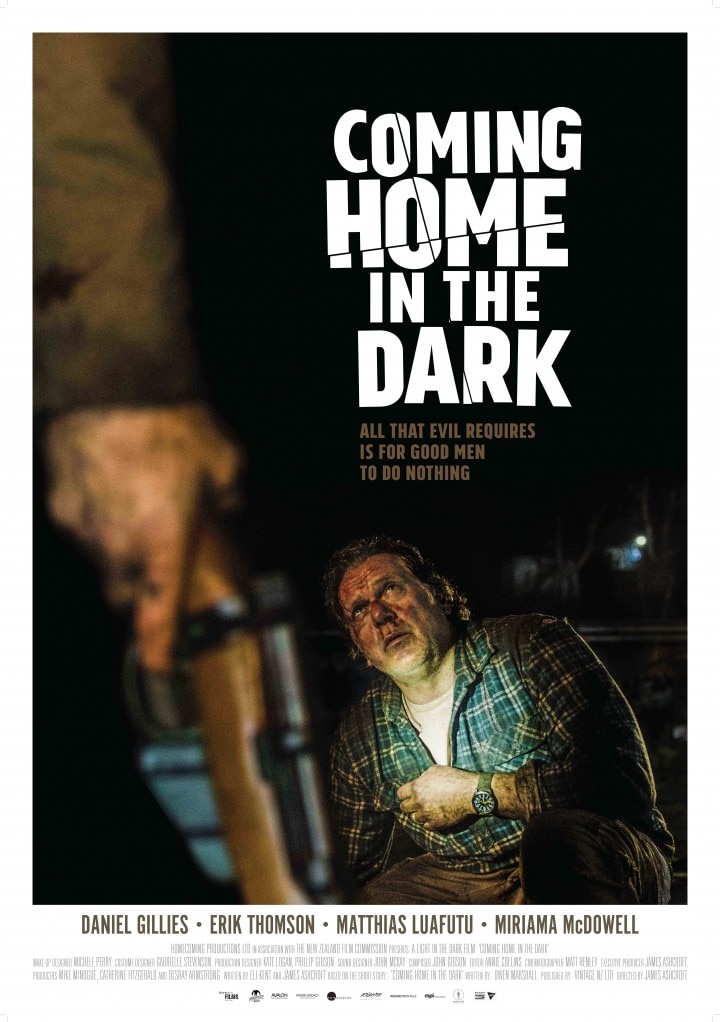Coming Home in the Dark (Killer Drifter Daymare Fuel Film)

There’s a chilling line of dialogue early in Coming Home in the Dark, the debut feature by New Zealand filmmaker James Ashcroft, that lays bare the film’s themes. It’s a standard thriller scene: the near, but missed, opportunity for rescue. As villain Mandrake (Daniel Gillies) and his accomplice hold a vacationing family led by Hoaggie (Erik Thomson) at gunpoint during an apparent robbery, a utility truck appears on the horizon. Hoaggie and his son exchange looks, wordlessly debating whether to make a run for it. They decide it’s too dangerous, the chance passes, and as the utility truck drives away, Mandrake says, “I think when you reflect back on this experience, that’s gonna be the moment you’ll wish you’d done something.”
Indeed, that’s the moment when things go from bad to worst imaginable–the start of a nightmare road trip through the wilderness to an unknown destination. Along the way, the unhinged but talkative Mandrake taunts Hoaggie with apparent knowledge of his past as a teacher in a cruel reform school. What did Hoaggie do, or not do? How much does Mandrake know? How random is this encounter, really? Mandrake’s statement from the first act is chilling because it points out a difficult truth: it’s only in retrospect that we can identify turning points in our lives. The moment is gone before we know it, and the rest of our lives–or somebody else’s–might be defined by what we did or didn’t do. Coming Home in the Dark is like Newton’s first law in brutal horror-thriller form. It’s too easy to stay at rest–to do nothing–but once we’re pushed in a direction we keep going, knocking against each other, crisscrossing the countryside, meeting and colliding and sending each other spinning.
Written by Cthulen, Dead Dreamer
Coming Home in the Dark (2021, US)
James Ashcroft
4 / 5

